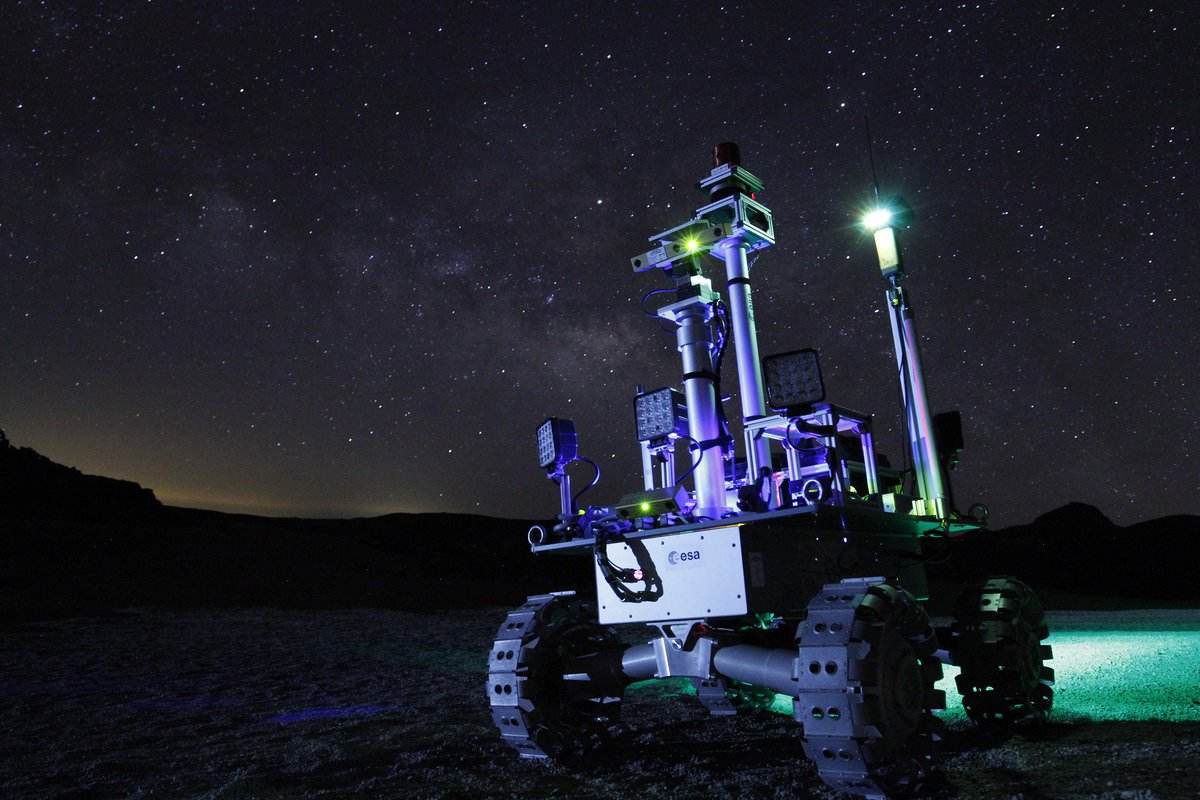The European Space Agency (ESA) is testing rover testbeds and associated control systems in preparation for future missions in conditions of low lighting or darkness.
A team from ESA’s Planetary Robotics Laboratory joined engineers from GMV in Spain to test rover operations as part of ESA’s Lunar Scenario Concept Validation and Demonstration (Lucid) project.
During a nine-day test campaign in July, two rovers — the Heavy Duty Planetary Rover (HDPR) and the Rover Autonomy Testbed (RAT) — travelled around a “Moon-like” area of Tenerife by both day and night, gathering terabytes of data for follow-up analysis.
“Until now, planetary rovers have always been operated during local daylight,” explains ESA robotics engineer Martin Azkarate. “But for proposed missions to the polar regions of the Moon, lighting conditions will be more difficult. Their high latitude means the Sun stays low on the horizon, casting long shadows, and deep craters stay mired in permanent shadow – potentially storing scientifically interesting water ice and other frozen volatiles.”
Sensors and software tools being tested include stereo cameras with associated night lamps, ‘time of flight’ ranging cameras, ‘laser-radar’ lidar sensors, inertial measurement units and wheel sensors.
Testing began by day, ensuring the rovers were running well and collecting ‘ground truth’ data using GPS and an overflying drone for detailed mapping, which rover observations could then be compared to. Night operations followed in the second half of the campaign.
The teams also achieved some additional objectives, including the gathering of datasets that can be used for subsequent testing of navigation algorithms in the lab. The HDPR was also steered remotely by a control team back on the European mainland. On the final day, the HDPR was used for autonomous navigation testing.
A self-navigating rover is seen as a necessary technology for future missions. The rover will have to work out its own route – first by taking images, then using these to map the surrounding area, followed by identifying obstacles and planning a path to safely reach its assigned goal.

